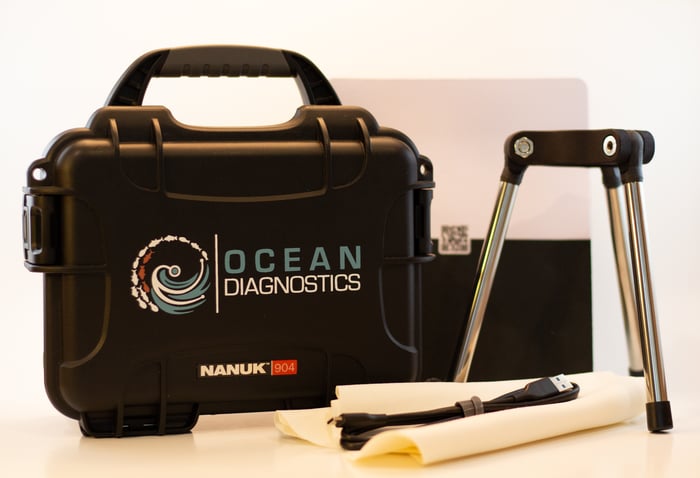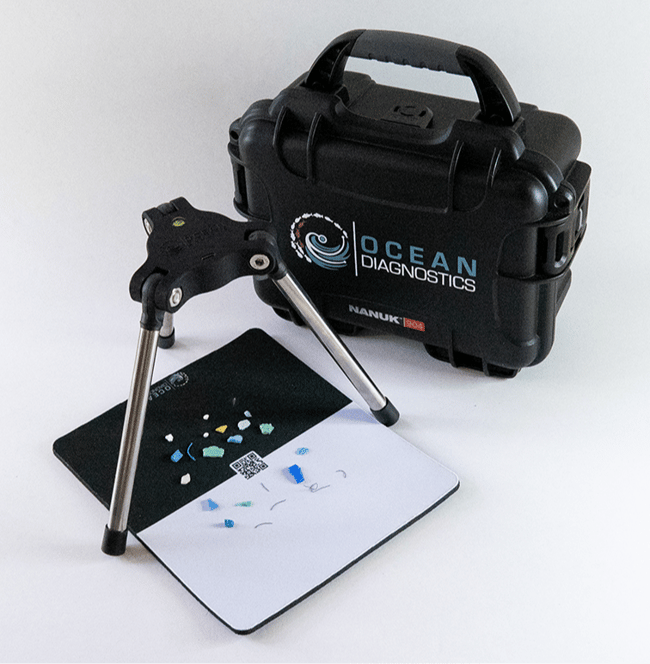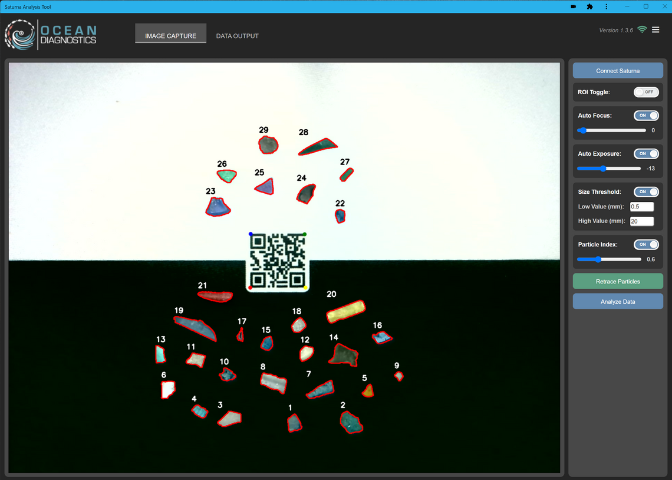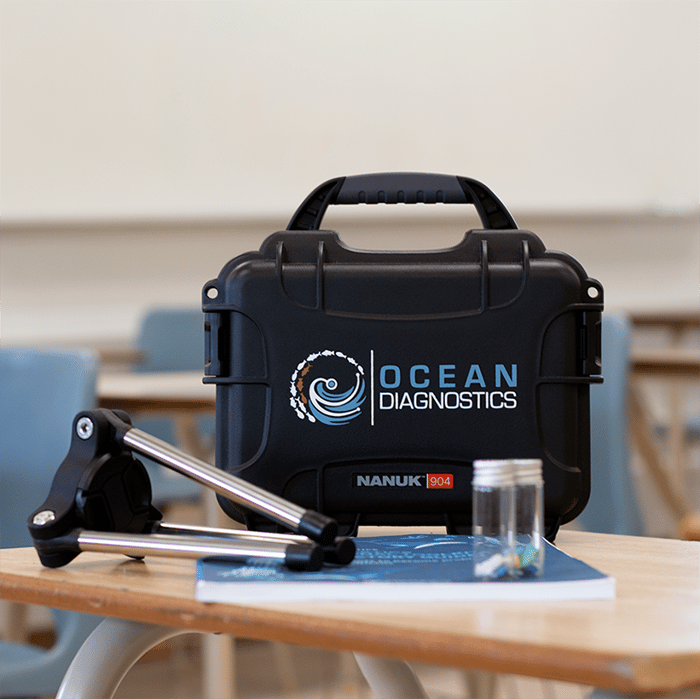
The Saturna Microplastics Imaging System
Automated technology to rapidly analyze visible microplastics

Reliable Microplastics Data In The Click Of A Button
To understand how microplastics break down, move through the oceans and freshwater systems and collect on coastlines, researchers and community monitoring groups must quantify a robust set of particle size parameters. Saturna is a portable, standardized microplastics imaging and illumination device that plugs into your computer and syncs with a standalone analysis web application to rapidly analyze visible microplastic particles.
Portable And Automated

Rapid, Standardized and Smart
HOW IT WORKS
- Isolate particles larger than 400μm using common collection protocols (e.g. net tows, community-based beach quadrat surveys)
- Place collected particles on included background sheet beside our standardized QR code sizing reference
- Place Saturna and included light-blocking shroud over top of the particles to block out external light
- Collect a standardized particle image through the standalone web analysis application (included with Saturna)
- Receive real-time sample image with size analysis and colour mapping created with proprietary image analysis software developed in-house
- Level of classification: proprietary analysis algorithms analyze visible microplastic particles (>400µm) for physical characteristics, including 13 size and colour metrics
FEATURES
- Highly standardized built-in LED lighting system provides consistent and reproducible lighting for your microplastic samples
- Compatible with any Windows PC and operated using our standalone analysis application
- Provides physical size and colour data for all microplastic particles imaged
- Computer pattern recognition and sizing algorithms calculate 13 discrete size calculations for every particle
- Predictive colour models calculate repeatable and standardized average colour calculations for each particle
SMART TECHNOLOGY
-
Saturna's standalone web analysis application rapidly calculates 13 size, shape and colour parameters for every particle imaged. Application features include the following:
- On or offline use with Chrome Apps
- Persistent user configuration settings
- Region of Interest (ROI) selection
- Particle size threshold filtering
- Data references for each parameter
- Histograms for each parameter
- Meta data tagging
- Sortable data tables
- Download data to .CSV file in one click
- Upgraded analysis documentation
The application is only compatible with the Saturna Imaging System.
- The data below is provided for every particle imaged:
- Maximum Width (mm)
- 2D Surface Area (mm2)
- Convex Surface Area (mm2)
- Perimeter (mm)
- Convex Perimeter (mm)
- Circular Equivalent Diameter (CED)
- Bounding Box Width (mm)
- Bounding Box Height (mm)
- Aspect Ratio
- Circularity
- Solidity
- Average HSV Colour Value
- Average BGR Colour Value
SPECIFICATIONS
- Use to collect high quality physical data for visible particles larger than 400μm in size
- Integrated 8MP Sony IMX179 CMOS Imaging sensor provides high resolution data
- Integrated ~4000k neutral white LED array and light-blocking shroud provide highly standardized microplastics images with consistent lighting for comparative size and colour analysis across time, location and external lighting conditions
- Included QR Code background sheet provides accurate particle sizing reference for physical analysis computer vision algorithms
- Use Saturna through our standalone application with any Windows PC
- Waterproof hard case included for easy transport into the field (26cm x 20cm x 12cm)
SYSTEM REQUIREMENTS
- Desktop or laptop with USB type A port
- Windows 10 operating system
- Broadband internet connection
Saturna Case Studies
"I never imagined there could be something like this that would make life easier for researchers.”
Fernanda Landim
Masters Student, University of Tasmania
“From a scientific perspective, Saturna helps give us so much information – it helps standardize. We can easily click through images and identify items in the seabirds, which is important for policy.”
Dr. Peter Puskic
University of Tasmania
Saturna Product Line


Microplastics Community Science and Education Toolkit
$899.99Empower community scientists, schools and environmental enthusiasts with the resources, tools and technology to contribute real microplastic data and create real change. Use step-by-step guides and training videos to learn about microplastic pollution, conduct microplastic surveys on your local sandy beach, upload and interpret the data using the first-of-its-kind Saturna Imaging System, and engage the larger community in results and solutions.
Contact Us
Tell us about your project and learn how we can help you to advance your microplastics research.




